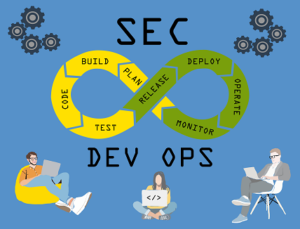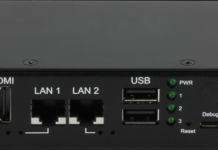
Companies of all shapes and sizes are aware of the benefits that DevOps, or Development Operations, brings to the table. Before, programmers would write code and pass them off to other teams without knowing if the code worked or not. This system was very inefficient–it was time-consuming, not to mention prone to errors.
But now, some businesses run thousands of apps and tools on a single day, which is just on a normal working day. Add to that the updates that are released several times a week. The old system of writing code and hoping for the best wouldn’t fly today. Security testing alone would be a nightmare.
A high degree of automation and standardization would take care of these problems, but both could cost a lot. Companies would have to innovate and come up with something productive. Luckily, the idea of DevOps came along, and it helped the faster development and deployment of a myriad of applications. With DevOps, data silos (information accessible only to one group) are avoided and collaboration is encouraged.
As we’re in the equivalent of the Industrial Revolution for techs, developers had to keep up or get swept away. For developers, the answer wasn’t to work faster. It was to work as a team. DevOps isn’t just a bunch of tools; it’s integration and streamlining of processes for faster deployment and implementation.
That’s all well and good, but what about DevSecOps?
What Is DevSecOps?
Correctly implemented, DevOps means improved collaboration among teams, faster implementation, increased productivity overall, and better client feedback. But without security, all those benefits will be for naught.
Murphy’s Law states that anything that can go wrong will go wrong, which is a valuable philosophy for engineers and developers. Assuming something will go wrong makes them look for areas that are vulnerable to errors. And, if they could do it as early as possible, so much the better. Thus, security was added to DevOps.
‘Sec’ became the Sam to the Frodo that was DevOps; a backup that could push DevOps to complete its mission.
Development, Security, and Operations (DevSecOps) automatically includes security at every stage of the software development lifecycle (SDLC)–from planning, design, development, testing, implementation, and maintenance. Fuzz testing, or finding bugs automatically, is done throughout the SDLC.
Security was no longer an afterthought tacked on by a separate security team and then tested by yet another team–the QA (quality assurance) team. In the old days, when once or twice a year release of software updates was the standard, this method was acceptable.
But the time of DevOps and other tools is here, and software development cycles are reduced to weeks or even days. The old method would create a disastrous bottleneck, especially the almost cavalier attitude towards security.
Benefits of DevSecOps To Management
DevSecOps was developed to instill in the minds of everyone involved that security should be everybody’s responsibility. It ensures that security is given equal importance, thus whatever code produced from the DevOps philosophy is secure and fuzz-tested.
Below are a few management benefits of using DevSecOps:
- Fast and Cost-Effective Software Delivery
Software development pre-DevSecOps had security problems that often resulted in delays. Fixing both the security issues and the code could mean interruptions. DevSecOps’s fast and secure delivery reduces the need for rework, which any programmer should avoid tackling security issues.
As rework and unnecessary rebuilds are reduced, the implementation of DevSecOps helps the company save time and money. Production becomes a lean, mean coding machine.
- Effective Security
DevSecOps brings in cybersecurity processes not only from the start of the development cycle but at every stage. The code, throughout the cycle, is reviewed and tested for vulnerabilities. Any bugs are promptly squashed and security issues immediately rectified. This way, additional dependencies won’t be tacked on to a security problematic code.
If spotted early during the development cycle, errors are less expensive to resolve. Identified and deployed early in the development cycle, protective technology can save the company a pretty penny.
- Efficient Resource Management
Software developers are aware of how ‘dependencies’ can ruin their day, especially when they’re created during software development and affected the rest of the workflow. For example, if an application needs a specific library, which relies on another library that happens to be vulnerable, it would mean that those other libraries wouldn’t be of use to anyone. You’d have to ‘rework’ the whole thing, which is anathema to any self-respecting team of developers.
Moreover, enhanced teamwork among development, security, and operations makes the company’s response to problems and incidents better. Problems are promptly dealt with when there’s teamwork.
Using the DevSecOps system lessens the time to resolve issues, making the security team free to focus on other high-value work. The process also makes sure that compliance is simplified, avoiding the old practice of tacking on security at the end of the development cycle.
- Flexible And Repeatable Process
As companies evolve, their culture evolves, too–they become more mature and their processes of dealing with security become more refined. The use of DevSecOps becomes more flexible and adaptable. The principles involved are embedded in the company culture and the practice is applied across the company infrastructure.
Security might not always have been the developers’ priority, but as DevSecOps becomes ingrained, developers would be more aware of security and exclude components that could affect software builds later on. Developers would have the habit of being extra careful with, or avoiding altogether, open-source codes, which can be alluring but dangerous.
A fully-mature DevSecOps would have dependable automation and better configuration management. Security issues introduced through an open-source code would be taken care of by an automated tool. Furthermore, DevSecOps turns security and application into a shared responsibility, with IT operations, security, and development teams working together.
Through the automation of the delivery of clean software, with no reworks dragging down software development, the DevSecOps motto of ‘software, safer, and sooner,’ is realized.
Conclusion
There isn’t a way to accurately predict whether your software or project will be totally safe and error-free. But when DevOps added security to transform into DevSecOps, it vastly reduced security risks right from the start of the software cycle. With security added to DevOps, companies benefited by being more efficient and more security-conscious.
The practice of DevSecOps saves them valuable time and resources. In effect, DevSecOps assumes that if something can go wrong, it’ll go wrong. Embracing paranoia can be an advantage, according to Murphy’s Law.


















